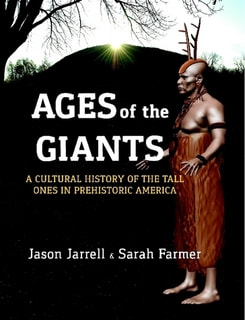|
(This article is dedicated to the First Nations peoples of New England.) Located in Piscataquis in Piscataquis County, Maine, Mount Katahdin rises to a height of 5,267 feet. A central feature of Baxter State Park, Mount Katahdin is the tallest mountain in Maine and marks the northern terminus of the Appalachian Trail. The mountain was formed around 400 million years ago when an island arc collided with North America. There are multiple glacial formations, ponds, and eskers in the mountain. These features and others have inspired music, paintings, and other forms of art since Europeans first observed the mountain in the 17thcentury. According to traditions of the tribes of the Wabanaki Confederacy, there is something ancient and primal which lives in Mount Katahdin, which has been long forgotten by westerners in their ruthless pursuit of reason and “progress”. For some of the local Algonquian speaking tribes understood this wonder of the New England landscape to be a lair of the powerful entities known as the Thunderbirds. Native Americans of the Eastern Woodlands and the Plains viewed the cosmos as divided into three “realms”: The Above Realm, the Earth Realm, and the Beneath Realm. The Great Spirit (Gitchie Manitou), the celestials, and the Thunderbirds inhabited the Above Realm, the Earth Realm is the world in which humans, plants, and animals live, and the Beneath Realm is a watery abyss beneath the earth, inhabited by water-born creatures. The ruler of the Beneath Realm is the “Great Horned Serpent” or “Underwater Panther”, a being associated with death and destruction, but also magic and medicine. The Thunderbirds are usually described a gigantic bird like beings with the power of the storm, rain, and lightning. However, the oral traditions of many tribes also mention their ability to turn into human-like men, or even incarnate as human beings (Skinner 1913). The Thunderbirds wage an endless war against the serpents, which pass from the underworld into the domain of man through caves, springs, rivers, lakes, and other watery places in order to cause calamities and forge alliances with wicked humans. In many traditions, humanity survives only because the Thunderbirds keep the serpents at bay. Dorsey (1889: 135-136) reported the following account of a battle between the Thunderbirds and the serpents obtained from the Lakota Sioux: Long ago, the Tetons encamped by a deep lake, whose shore was inclosed by very high cliffs. They noticed that at night, even when there was no breeze, the water in the middle of the lake was constantly roaring. When one gazed in that direction he saw a huge eye as bright as the sun, which caused him to vomit something resembling black earth moistened with water, and death soon followed. That very night the Thunderers came, and the crashing sounds were so terrible that many people fainted. The next morning the shore was covered with the bodies of all kinds of fish, some of which were larger than men, and there were also some huge serpents. The water monster which the Thunderers fought resembled a rattle snake, but he had short legs and rusty-yellow fur. Charles Leland (1885: 259-261) recorded a Passamaquoddytale of a hunter who encountered the thunder beings of Mount Katahdin. The hunter had followed mysterious snow-shoe tracks up the mountain until reaching a virtual road of tracks leading to “a high ledge, like an immense wall, on a platform at its foot.” A beautiful girl then stepped out of the rock face and demonstrated great m'téoulin (or magic), as she could read the hunter’s thoughts. Gaining his confidence, she invited him into the rocky face of the mountain to her home: "Have no fear," said she, "but advance boldly!" So he obeyed, and lo! the rock was as the air, and it gave way as he went on. And ever as they went the maiden talked to him, answering his thoughts, so that he spoke not aloud. (Leland 1885: 260) The girl lead the hunter into a great cavern where an old man seated near a fire greeted them. Soon the girl’s “brothers” arrived, as described by Leland (1885: 260-261): …there came, as at the door without, a crash of thunder with a flash of lightning, and out of the light stepped two young men of great beauty, but like giants, stupendous and of awful mien. And, like their father, their eyebrows were of stone, while their cheeks were as rocks…when they went forth, which was every few days, their father said to them, "Sons, arise! it is time now for you to go forth over the world and save our friends. Go not too near the trees, but if you see aught that is harmful to those whom we love, strike, and spare not!" Then when they went forth they flew on high, among the clouds: and thus it is that the Thunder and Lightning, whose home is in the mighty Katahdin, are made. And when the thunder strikes, the brothers are shooting at the enemies of their friends. When the hunter returned home, he found that seven years had passed. Another being associated with Mount Katahdin is Pamola (“he curses on the mountain”) a gigantic bird like creature sometimes depicted with a man-like body and large sharp talons, who was the master of cold weather, storms, and snow. Vetromile (1866: 62-68) recorded several legends of the Penobscot tribe concerning Pamola, who was believed to dwell in the highest peaks of Katahdin, devouring those Indians who dared to venture there. According to one of the tales, a hunter trapped in an autumn snowstorm at the base of the mountain petitioned Pamola for aid with oil and fat. Pamola accepted the offering and took the hunter inside of Mount Katahdin to his lair, where he introduced him to his wife and children. Pamola married his own daughter to the Indian, and permitted him to leave the mountain after one year, but on a fearful condition: “He was warned that he could not marry again, but if he should marry again, he would be at once transported to Mount Katahdin, with no hope of ever more going out of it” (Vetromile 1866: 64). The Indian did eventually remarry, and the morning after the wedding he disappeared forever. Vetromile also recorded a similar tale of a young Penobscot girl who sought out proof of Pamola’s existence and was eventually abducted: Pamola appeared to her and reproached her with her incredulity. He took her by force, put her on his shoulders, and after a few moments' flight, with a great whistling of wind, they were in the interior of the mountain. There she remained for one year, and was well treated, but was got with child by Pamola.(Vetromile 1866:65) The child born of this union had the power to kill by merely pointing his finger, which at first was used only to obtain duck, deer, and moose for food. Eventually however, he kills a man, and the woman is encouraged to remarry. Like the man who married Pamola’s daughter, the woman and hybrid her son then disappear forever on her marriage day. The Indians were not the last to realize the epic dimension of Mount Katahdin. In 1846, the great American poet and philosopher Henry David Thoreau explored the mountain, an experience that actually challenged his belief that nature was congenial and comparable to human existence (Blair and Trowbridge 1960). While Thoreau found no confirmation of his humanist transcendentalism on Katahdin, he didsense the encroaching realm of the mythic, as elaborated in the following passages published in 1864: Occasionally, when the windy columns broke in to me, I caught sight of a dark, damp crag to the right or left; the mist driving ceaselessly between it and me. It reminded me of the creations of the old epic and dramatic poets, of Atlas, Vulcan, the Cyclops, and Prometheus. Such was Caucasus and the rock where Prometheus was bound. Æschylus had no doubt visited such scenery as this. It was vast, Titanic, and such as man never inhabits…The tops of mountains are among the unfinished parts of the globe, whither it is a slight insult to the gods to climb and pry into their secrets, and try their effect on our humanity. (Thoreau 1864: 64-65) Incredibly, Thoreau had experienced what the ancestors of the New England Indians had realized on Mount Katahdin untold millennia ago: some places are set aside by the forces that mold the world and belong forever to something other than human. References
John G. Blair and Augustus Trowbridge, “Thoreau on Katahdin”, AmericanQuarterlyVol. 12 No. 4, 1960, pp. 508-517. J. Owen Dorsey, “Teton Folk-Lore Notes”, The Journal of American Folklore, Vol. 2 No. 5, 1889, pp. 133-139. Charles G. Leland, The Algonquin Legends of New England, Riverside Press, Cambridge, 1885. Alanson Skinner, Social Life and Ceremonial Bundles of the Menomini Indians, American Museum of Natural History, Anthropological Papers 13 (1), 1913. Henry D. Thoreau, The Maine Woods, Ticknor and Fields, Boston, 1864. Eugene Vetromile, The Abnakis and Their History, James B. Kirker, New York, 1866.
0 Comments
Your comment will be posted after it is approved.
Leave a Reply. |
About UsWe are explorers of cosmology, anthropology, philosophy, medicine, and religion. Archives
October 2020
Categories
All
|
Photo used under Creative Commons from John Brighenti


 RSS Feed
RSS Feed
